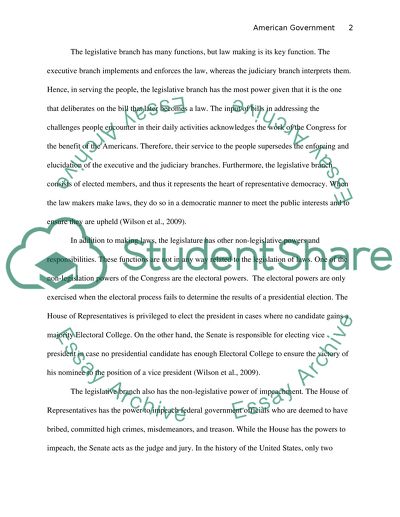Cite this document
(“Three branches of the U.S. government Essay Example | Topics and Well Written Essays - 1000 words”, n.d.)
Three branches of the U.S. government Essay Example | Topics and Well Written Essays - 1000 words. Retrieved from https://studentshare.org/law/1464215-three-branches-of-the-us-government
Three branches of the U.S. government Essay Example | Topics and Well Written Essays - 1000 words. Retrieved from https://studentshare.org/law/1464215-three-branches-of-the-us-government
(Three Branches of the U.S. Government Essay Example | Topics and Well Written Essays - 1000 Words)
Three Branches of the U.S. Government Essay Example | Topics and Well Written Essays - 1000 Words. https://studentshare.org/law/1464215-three-branches-of-the-us-government.
Three Branches of the U.S. Government Essay Example | Topics and Well Written Essays - 1000 Words. https://studentshare.org/law/1464215-three-branches-of-the-us-government.
“Three Branches of the U.S. Government Essay Example | Topics and Well Written Essays - 1000 Words”, n.d. https://studentshare.org/law/1464215-three-branches-of-the-us-government.


